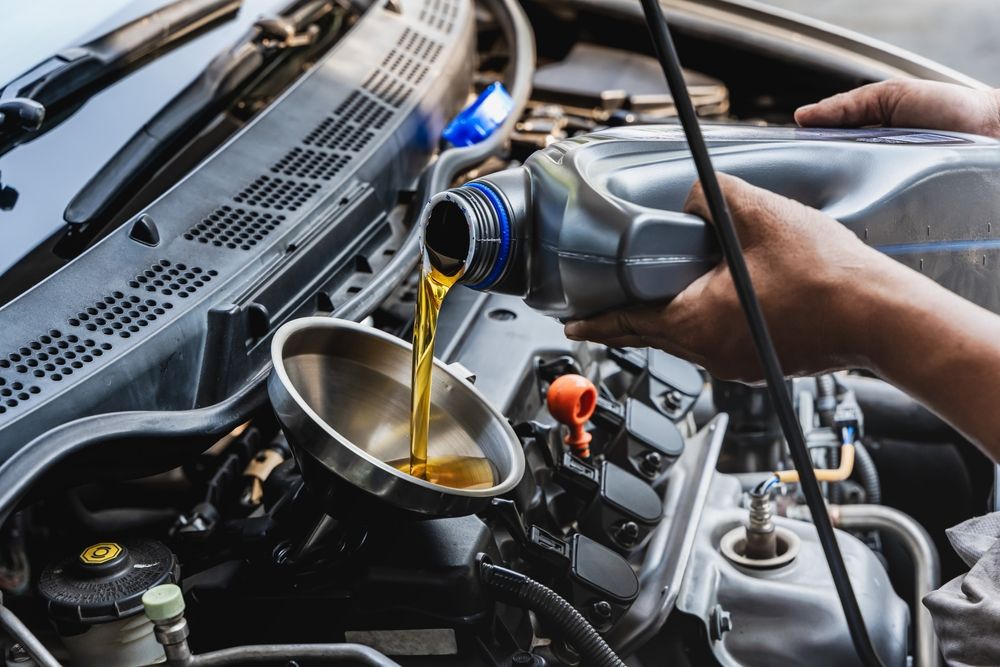Regular oil changes are essential to keeping your vehicle’s engine running smoothly and prolonging its lifespan. But with newer car models touting long-life synthetic oils, on-board maintenance reminders, and varying driving patterns, it can be confusing to determine the ideal schedule for changing your car’s oil. Should you do it every 3,000 miles, follow the manufacturer’s recommended intervals, or trust your car’s monitoring system? This guide walks you through all these considerations and clarifies how factors like oil type, driving style, and vehicle age can influence when it’s time to refresh that oil.
1. Why Changing Your Oil Matters
Why It’s Important
Motor oil does more than just lubricate your engine’s moving parts—it also helps cool, clean, and protect the engine from wear. Over time, oil degrades; it collects contaminants, loses viscosity (thickness), and can no longer provide optimal protection. Delaying oil changes too long can lead to increased friction, sludge formation, and potentially severe engine damage.
Key Functions of Engine Oil
- Lubrication: Reduces metal-on-metal contact, minimizing wear on components like pistons, crankshafts, and camshafts.
- Cooling: Helps dissipate heat from engine parts that might otherwise overheat.
- Cleaning: Suspends dirt and microscopic debris in the oil, preventing them from depositing on engine surfaces.
- Sealing: Assists in creating an effective seal between piston rings and cylinder walls.
Takeaway
Fresh, clean oil is critical to maintaining engine health, fuel efficiency, and overall performance. Neglecting this simple service can escalate to expensive repairs.
2. Manufacturer Recommendations vs. Traditional Rules
Why It Matters
The old-school advice said to change oil every 3,000 miles or every three months, whichever comes first. While that was once prudent—especially for older cars using conventional oils—modern engines and lubricants often last longer between oil changes.
Manufacturer Service Intervals
- Typical Range: Many carmakers now specify oil-change intervals from 5,000 to 7,500 miles for normal driving conditions. Some even suggest up to 10,000 miles or more if using advanced synthetic oils and filters.
- Owner’s Manual: The best starting point is your manual or your car’s maintenance guide. It outlines recommended intervals based on average driving patterns.
- Severe vs. Normal Conditions: Some guidelines differentiate between “severe” conditions (frequent short trips, extreme temperatures, towing, dusty roads) and “normal” usage. Under severe conditions, you may need more frequent changes.
Takeaway
While the 3,000-mile rule is no longer universal, it’s always best to check your specific vehicle’s manual. The manufacturer’s guidelines consider your car’s engine design, oil specs, and overall engineering.
3. Considering Synthetic vs. Conventional Oil
Why It Matters
The type of oil used can dramatically affect how frequently you need to do oil changes. Higher-grade synthetic oils typically last longer, resist breakdown under high heat, and flow better in cold temperatures.
Oil Types
- Conventional Oil:
- Pros: Cheaper, widely available.
- Cons: Shorter lifespan, less tolerance for extreme conditions.
- Change Interval: Often 3,000–5,000 miles or every 3–4 months for older engines, though some can stretch further depending on manufacturer recommendations.
- Synthetic Blend:
- Pros: Mix of conventional and synthetic, offering some benefits of synthetic at a moderate price.
- Cons: Not as robust as full synthetic, but still better than pure conventional.
- Change Interval: Often 5,000–7,500 miles, depending on brand and car’s specs.
- Full Synthetic:
- Pros: Excellent performance in heat/cold, resists breakdown, can handle extended intervals.
- Cons: Higher cost up front.
- Change Interval: Many cars with full synthetic can go 7,500–10,000 miles or even 12,000 miles, though it’s wise to confirm with your manual or a trusted mechanic.
Takeaway
If your car is equipped or recommended to use synthetic oil—and you’re comfortable with the slightly higher cost—these extended intervals can reduce the hassle of frequent changes. However, always confirm your car’s compatibility, as older models might fare best with more frequent changes or certain oil formulations.

4. Monitoring Oil Life and Condition
Why It Matters
Modern cars commonly have an oil life monitoring system that calculates oil degradation based on driving habits, temperature, idle time, and more. Understanding these prompts ensures you don’t swap out oil prematurely or risk damage by ignoring warnings.
Ways to Monitor
- Onboard Systems: Many newer vehicles display the remaining oil life as a percentage on the dash. This is a guideline based on algorithms, so trust it if you keep your system resets updated after each oil change.
- Manual Checks: Periodically pull the dipstick (with engine off) to check oil level and color. Dark, gritty, or sludgy oil can signal the need for a change—though color alone isn’t always conclusive.
- Pay Attention to Performance: Unusual engine noises, reduced fuel efficiency, or an oil pressure warning light can also point to overdue oil.
Takeaway
Even with extended oil intervals, staying vigilant with checks helps catch anomalies. If you regularly track your mileage and consult your car’s built-in monitor, you can be confident about your next change date.
5. Driving Habits and Conditions
Why It Matters
Your personal driving style and environment can drastically influence oil life. Two drivers with the same car but different usage patterns might have different ideal change intervals.
Factors
- Short Trips: If you rarely drive more than 10 minutes, the engine might not fully warm up, leading to faster oil contamination from condensation or fuel residues.
- Stop-and-Go: Urban or high-traffic routes with frequent idling can degrade oil quicker.
- Towing or Heavy Loads: Extra strain on the engine can cause higher temperatures and oil stress.
- Extreme Temperatures: Very hot or cold climates can accelerate oil breakdown or thickening.
Takeaway
If your car faces these “severe” conditions regularly, consider changing oil more often than the maximum recommended. The manufacturer often outlines separate intervals for these usage patterns.
6. What Happens If You Delay Too Long?
Why It Matters
Skipping an oil change by a few weeks might not cause immediate catastrophe, but consistently pushing intervals far beyond recommended guidelines can cause longer-term engine issues.
Risks
- Decreased Lubrication: Old oil can turn sludgy, failing to lubricate crucial engine parts.
- Increased Wear: Resulting friction escalates component wear, eventually requiring major engine repairs.
- Overheating: Thick, degraded oil can’t cool as effectively, raising the possibility of overheating.
- Voided Warranty: Many manufacturer warranties mandate following official service intervals.
Takeaway
Running your engine on old oil could jeopardize both performance and longevity—leading to higher expenses than a timely oil change would have cost.
While the straightforward “every 3,000 miles” rule dominated past decades, modern engines and oil formulations have enabled longer intervals, making your specific vehicle manual or oil life monitor the real authorities. Synthetic oils can push these intervals further, offering performance benefits and sometimes offsetting their higher price with fewer annual changes. However, keep in mind that extremes—like frequent short trips, towing, or severe climates—may shorten those recommended intervals, regardless of oil type.
Pairing your manufacturer’s guidelines with occasional manual checks (like dipstick inspections) ensures you stay proactive. If you notice odd engine noises or unusual dips in performance, it might be time for an extra oil change, even if you haven’t hit the recommended mileage. Ultimately, regular, well-timed oil changes remain one of the simplest, most cost-effective ways to keep your engine humming. By balancing the best of new technology (like synthetic oils and onboard monitors) with old-school diligence, you’ll maximize your car’s reliability and longevity for many miles down the road. Safe driving—and happy car maintenance!





